AI develops a video game
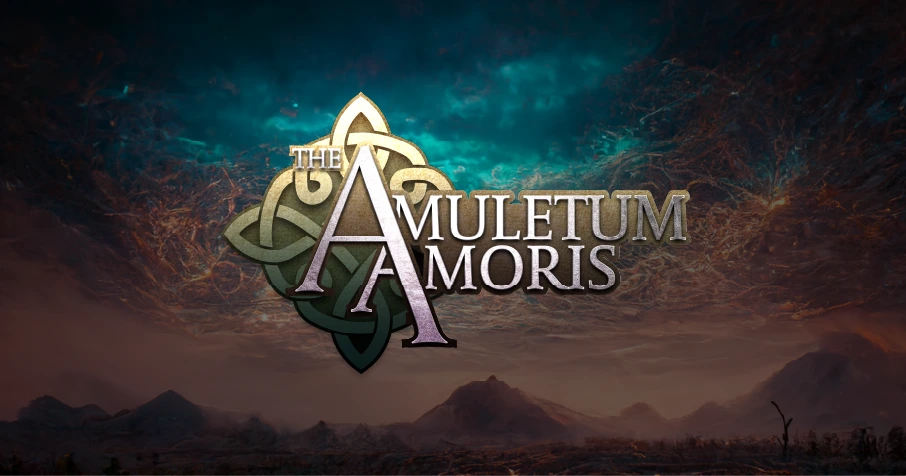
Key takeaways
- The AI invented a 3D open-world RPG game called The Amuletum Amoris.
- The protagonist and antagonist were both dynamic characters with intriguing traits.
- 95% of gamers would play this AI-generated game.
Artificial development
Video games are a treasured art form among players. Role-playing games (RPGs) are an incredibly popular genre, spawning such massive hits as Pokémon Red and Blue and the Diablo franchise. Moreover, open-world games (where players can approach the game’s objectives without structure) have become increasingly popular over the last several years.
It can take years for people to develop a new video game, so we wondered: could they speed up the process by using AI (artificial intelligence)? To create a new game complete with images and a storyline, we used GPT-3: an AI language model that generates text using internet data, and Midjourney: an AI program that creates images from textual descriptions. We then presented AI’s creation to a pool of passionate gamers and asked for their thoughts. Read on to see what happened.
Enter the world of The Amuletum Amoris
With so many substantive and dynamic open-world games on the market, would players be interested in one made by AI? Let’s see what GPT-3 came up with and how Midjourney brought it to life.
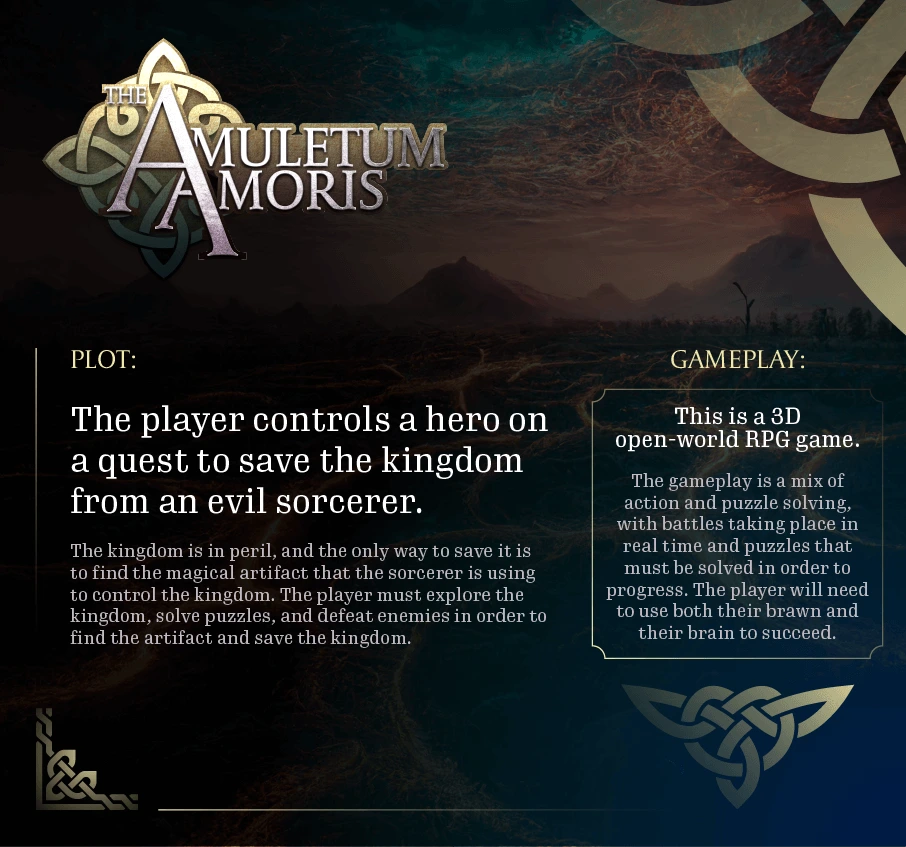
The AI created an intriguing game called The Amuletum Amoris, a 3D open-world RPG in which a hero is on a quest to save a kingdom from an evil sorcerer. The game revolves around solving puzzles and fighting enemies throughout the kingdom, all while on a mission to find a magical artifact that’s under the sorcerer’s control. It combines puzzle solving and combat, making it engaging on multiple levels, and Midjourney topped it off with an almost medieval-looking aesthetic.
Introducing Aurora
When you think of great video game protagonists, maybe Resident Evil’s Jill Valentine or Arthur Morgan from Red Dead Redemption 2 come to mind. With countless beloved heroes in the video game world, GPT-3 had its work cut out for it in creating one that stood out. Introducing Aurora, the guardian of the kingdom.
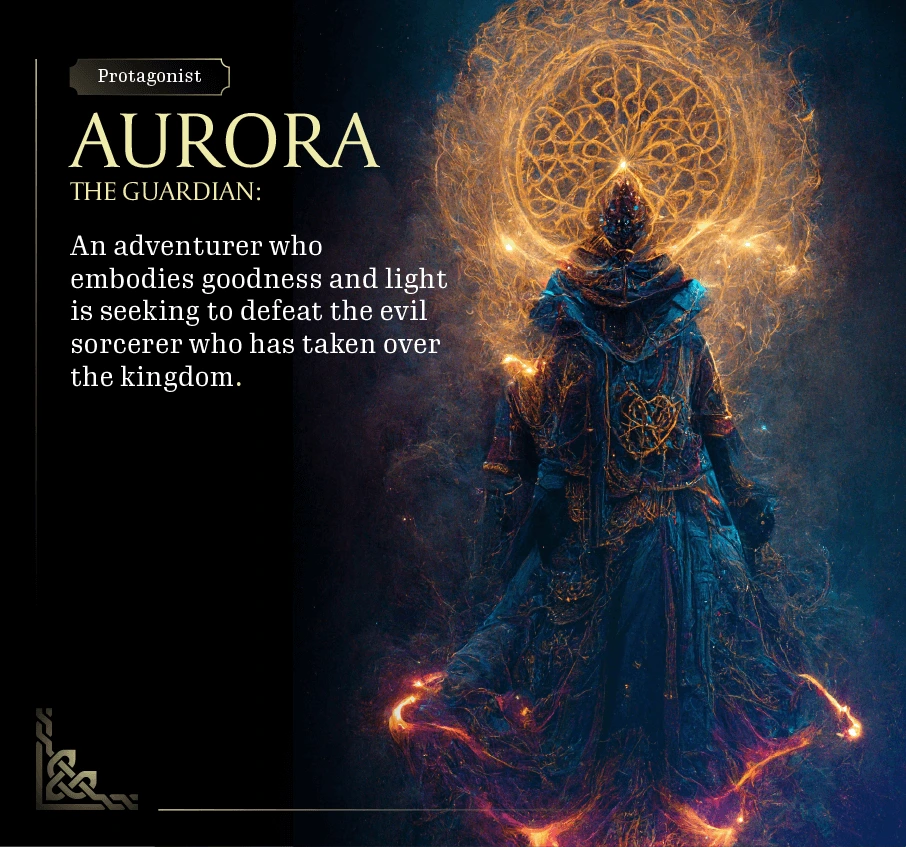
It seems like the AI came through with Aurora—a guardian tasked with defeating the evil sorcerer who has taken over the kingdom. This protagonist has some fascinating items at their disposal, including a staff that can shoot fire, a bow that shoots arrows of light, a helmet that allows them to see through walls and boots that provide the ability to walk on air.
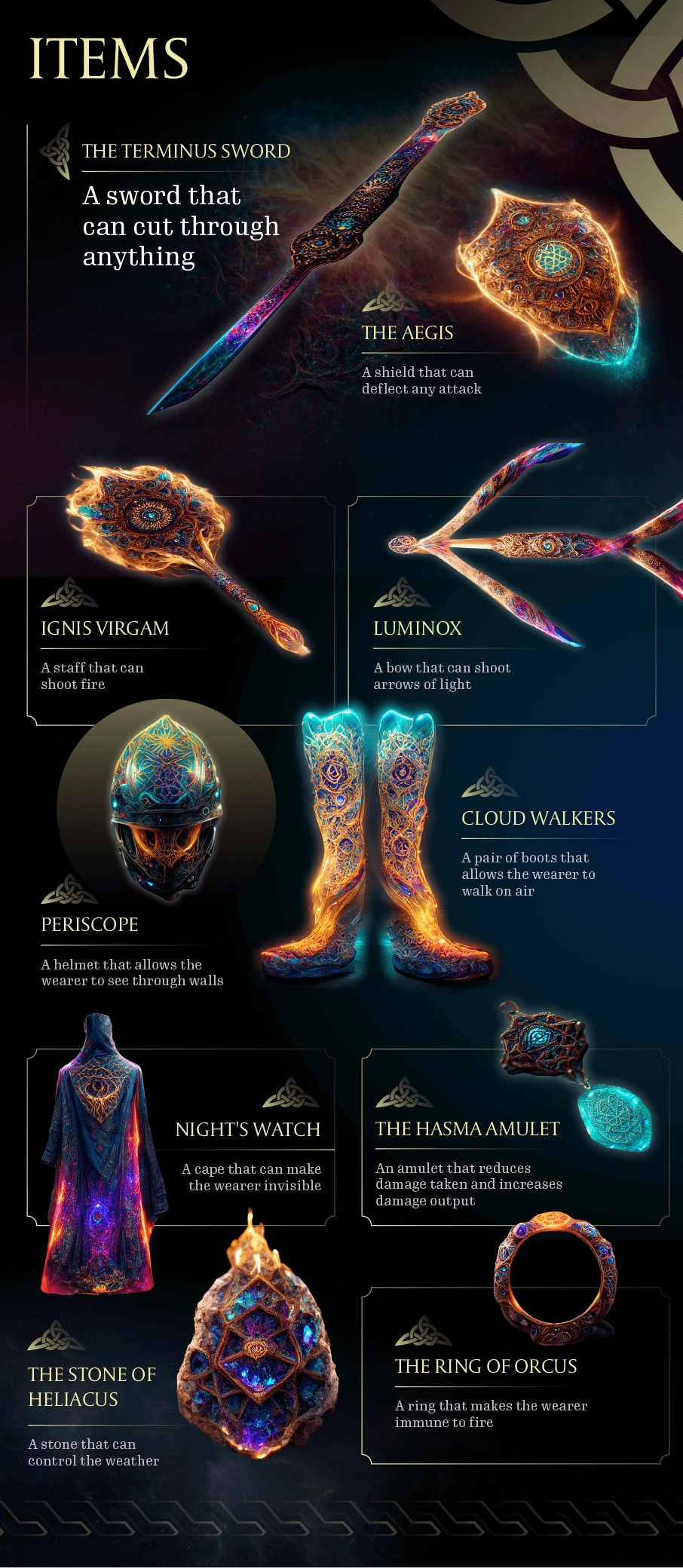
That’s a lot of power to wield against an evil antagonist. But what exactly is Aurora up against? You’re about to find out.
A world engrossed in chaos
Video games, especially RPGs, are nothing without their antagonists. A great video game villain gives you that anxious feeling in the pit of your stomach that motivates you to beat them. From Mass Effect’s Illusive Man to Sephiroth from Final Fantasy, many villains over the years have fit the bill. Let’s see how AI’s bad guys stack up.
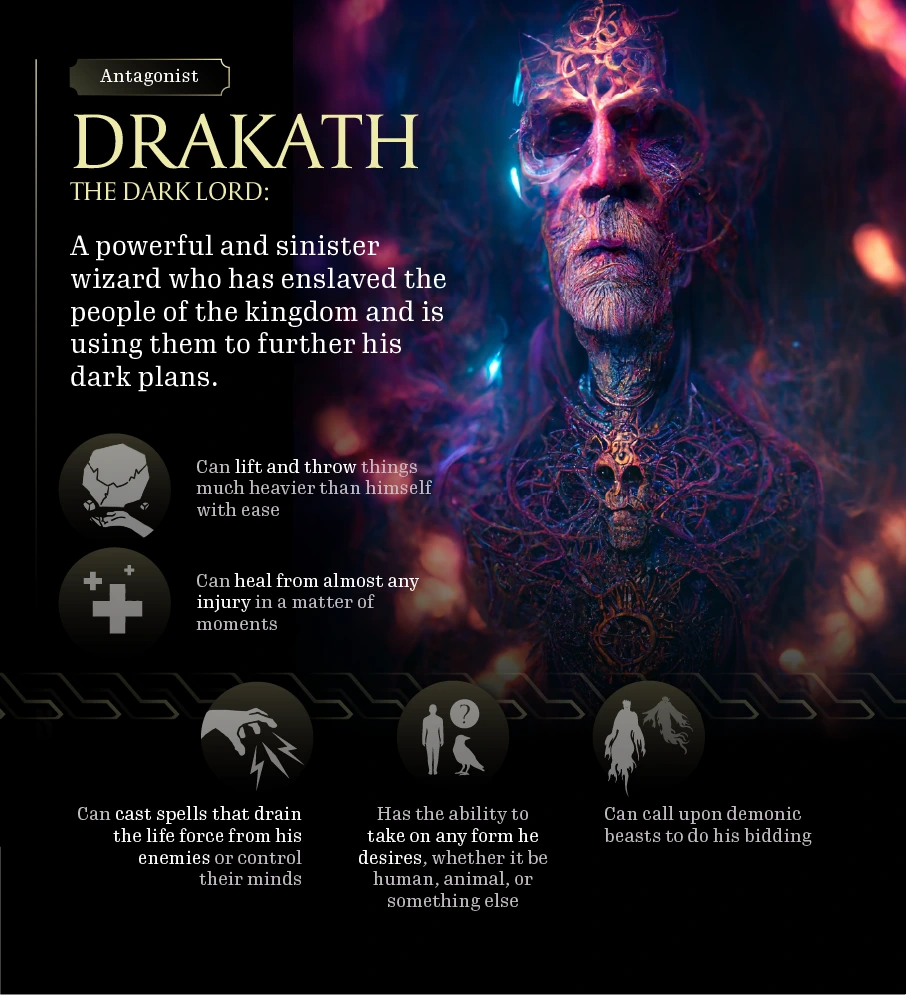
The main antagonist of The Amuletum Amoris is Drakath, the Dark Lord: a wizard who has enslaved the kingdom and is using its inhabitants to further his sinister agenda. He can heal from any injury, lift and throw extremely heavy things, summon beasts to do his bidding and cast mind-control spells. What more could a video game boss throw your way?

Aurora will encounter many lesser villains throughout the game as well to return balance to the kingdom. These fierce elemental bosses include a dragon-like fire spirit (Fafnir), stone golem (Golmi), fearsome water serpent (Naiad) and spirit made of wind (Windigo), all equipped with their own unique set of devastating abilities.
Playability sentiments
Gamers are passionate people, so it’s no surprise that they have opinions about what makes a good video game. Let’s find out where they stand on The Amuletum Amoris.
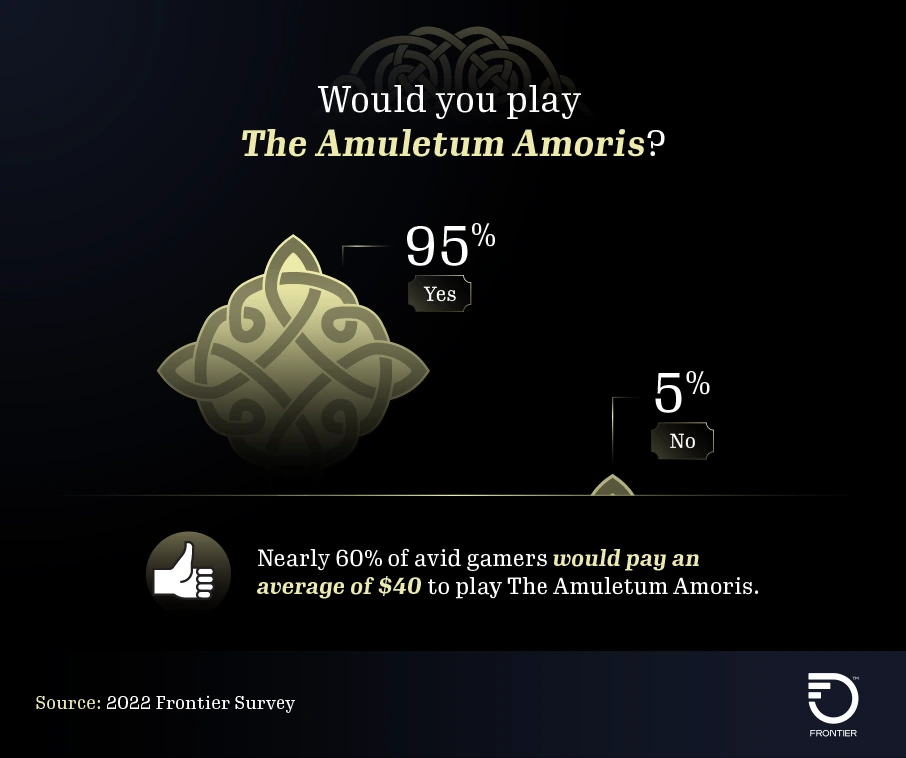
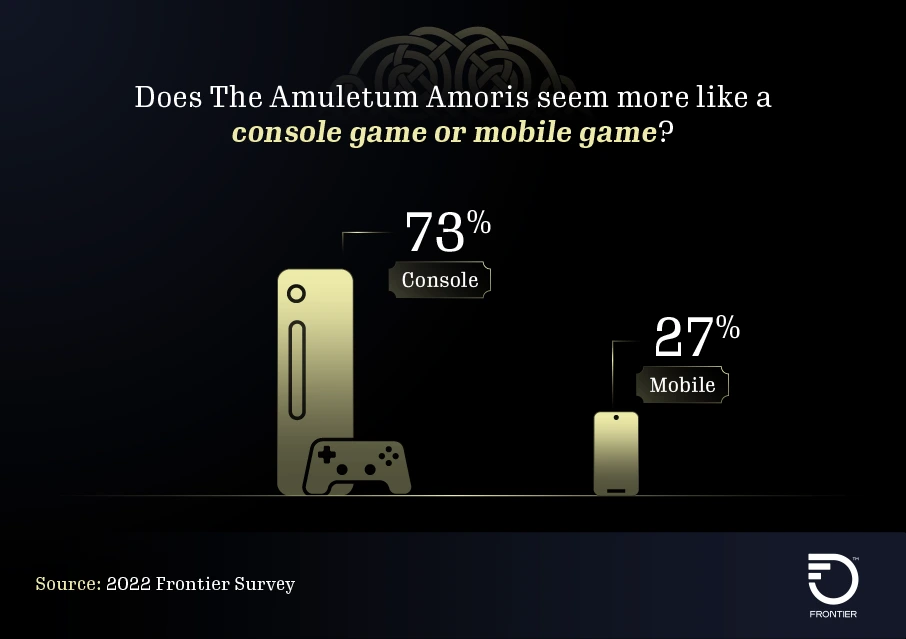
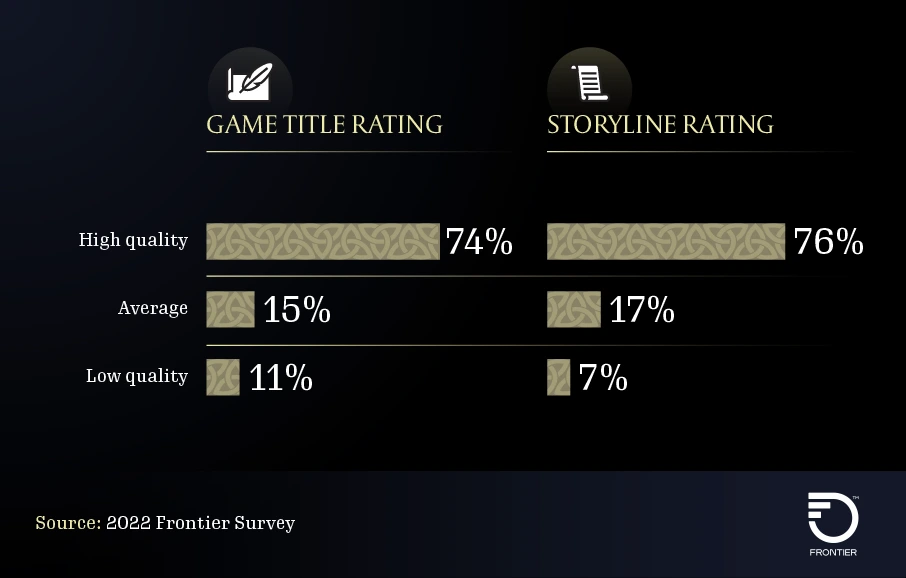
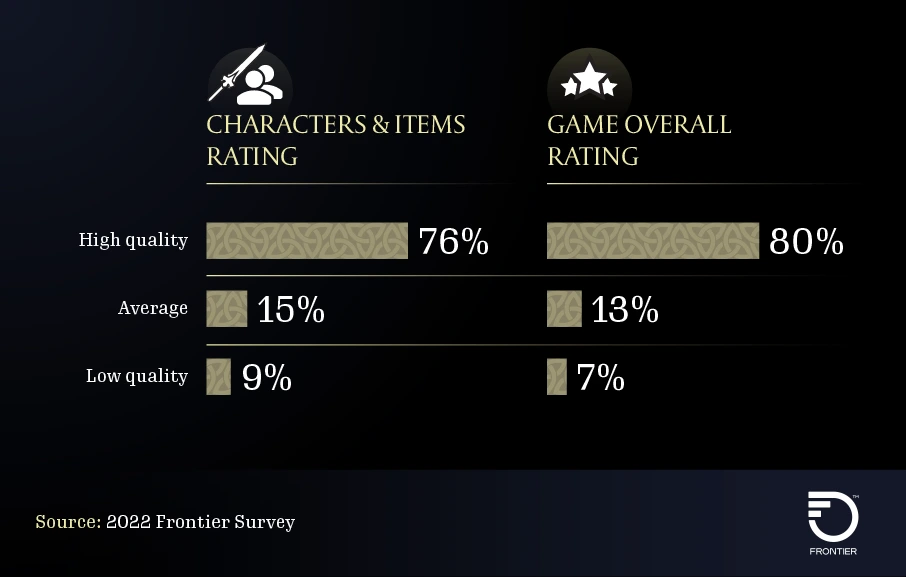
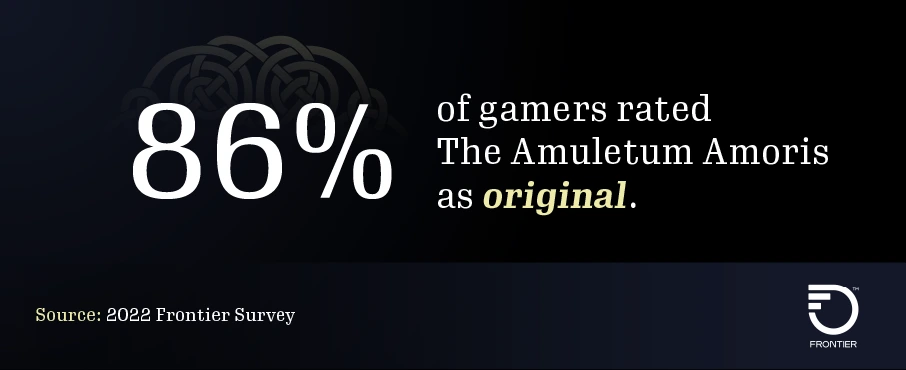
Nearly all the gamers we surveyed (95%) said they would play our AI-created game, and nearly 60% said they would pay $40 for the opportunity. They overwhelmingly thought the game’s characters, items, storyline and title were high quality (74%-80%), and they also gave the overall game quality a high rating (80%). Perhaps most encouraging was that 86% felt the game seemed original. Those are pretty great results for a video game designed with minimal human input.
Creative evolution
Can an AI-designed game stack up against a human-conceived one? According to our findings, it’s certainly possible. Most gamers seemed to like The Amuletum Amoris, rating all of its various aspects highly. But while much can be said about AI’s ability to come up with an engaging game rated so highly by experienced players, that’s not to say AI will be taking the jobs of video game designers any time soon. All the greatest games in the history of the medium have had talented creatives at the helm. Perhaps this is just the beginning of a world of new possibilities in the gaming industry.
Methodology
We surveyed 1,000 avid gamers regarding their sentiment towards the AI-created video game, The Amuletum Amoris. The mean age of respondents was 38 years old. Among them, 58% were male, and 42% were female. Respondents comprised the following generational breakdown: 23% Gen Z, 54% millennials, 15% Gen X and 8% baby boomers. All prompts were generated using GTP-3, and all images were generated using the Midjourney AI tool.
About Frontier
Frontier provides affordable ultrafast fiber internet to customers across the country. A fast and reliable internet connection reduces download and update duration, allowing players to spend less time waiting and more time gaming. That means reduced latency and lag time, so you can dodge attacks and swiftly beat your online opponents.
Fair use statement
If you’re a gamer who enjoyed our study, you’re welcome to share it. We only ask that you link back to the findings and that your purposes are noncommercial.